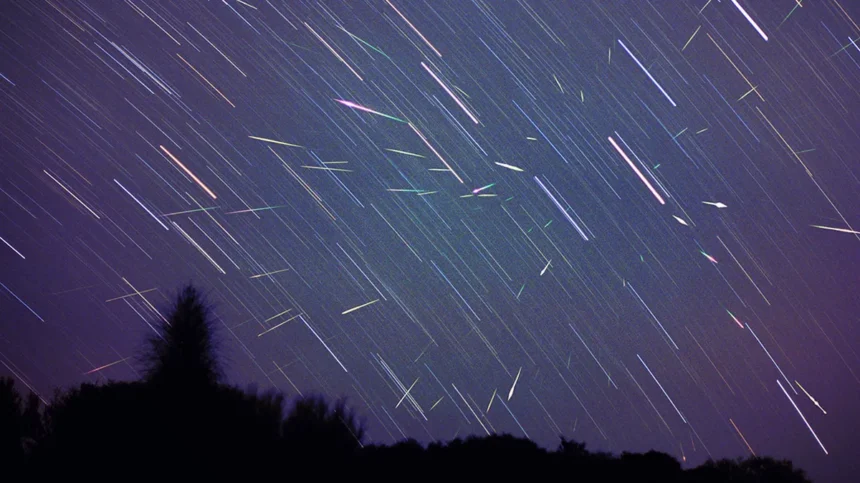The night sky has always been a canvas of wonders, captivating humanity with its celestial displays. One such mesmerizing event is the annual Leonid Meteor Shower, set to grace our skies in 2023. Named after the constellation Leo, from which they appear to originate, the Leonids have a rich history of dazzling stargazers around the world.
The Leonid Meteor Shower occurs when Earth crosses the orbital path of Comet 55P/Tempel-Tuttle. As our planet plows through the debris left behind by the comet, particles burn up in the Earth’s atmosphere, creating streaks of light that we perceive as meteors. The radiant point, the spot in the sky where the meteors seem to originate, lies within the Leo constellation.
The Leonid meteor shower is active between November 03 and December 02. The peak of the Leonid Meteor Shower in 2023 is expected to be during the night of November 17th. This celestial event is known for its periodic outbursts, where the meteor rate dramatically increases. Astronomers predict an enhanced display this year, offering skywatchers a potentially spectacular show.
To maximize your viewing experience, find a location far from city lights with a clear, unobstructed view of the night sky. It’s advisable to observe during the pre-dawn hours when the radiant point is high in the sky. Bring a blanket or a reclining chair, dress warmly, and let your eyes adjust to the darkness for at least 20 minutes to fully appreciate the meteors’ faint trails.
The Leonids are known for their speed, entering the Earth’s atmosphere at about 71 km/s (44 miles/s). While most meteors are relatively faint, the Leonids are famous for producing bright fireballs—exceptionally luminous meteors that can cast shadows and leave a lasting impression on observers.
The Leonids have a storied past, with some of the most memorable showers in history occurring in 1833 and 1966 when observers reported thousands of meteors per hour. While such meteor storms are rare, the regular annual displays make the Leonids a reliable and eagerly anticipated event for astronomy enthusiasts.
Capturing the Moment:
Photographing meteor showers can be challenging but immensely rewarding. Use a tripod to steady your camera and set a wide aperture and high ISO for optimal results. Be patient, as capturing a meteor requires timing and a bit of luck.
As we prepare to witness the celestial ballet of the Leonid Meteor Shower in 2023, let’s embrace the sense of wonder that the cosmos never fails to inspire. Whether you’re a seasoned astronomer or a casual observer, the Leonids offer a magical opportunity to connect with the vastness of the universe right from your own backyard. So, mark your calendars and set your sights on the night sky for a celestial performance that promises to leave an indelible mark on your memory.






